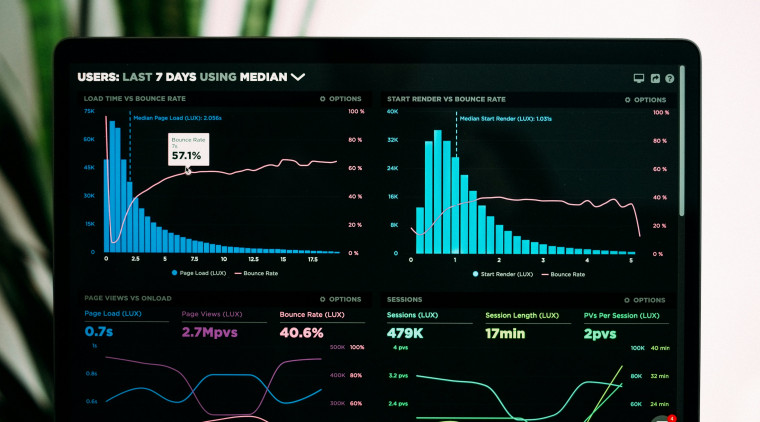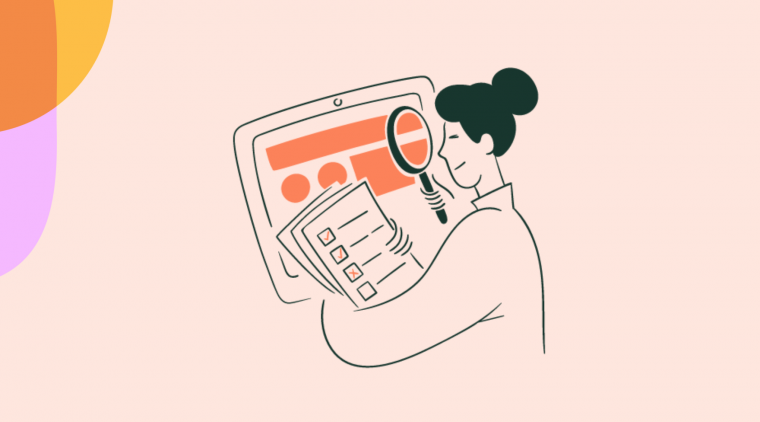Personalization is a big deal in SaaS user onboarding. It improves the user experience by tailoring the onboarding experience to each individual user’s needs.
There are various ways to create a personalized onboarding process for existing and new users alike—through product tours, in-app messaging, personalized flows, and more. It turns new users into loyal customers, improving your ever-important adoption and retention rates.
Personalized onboarding tailors the onboarding experience to individual users, user personas, and different groups of users
For the best results, gather user details during the sign-up process to better understand their needs, categorize users based on their roles or jobs to be done, and set expectations upfront
You can personalize onboarding using in-product experiences like product tours, tooltips, in-app onboarding checklists, self-serve help menus, and more
What is personalized onboarding? #
Not all users are the same, so not all onboarding experiences should be the same. Personalized onboarding ensures you cover the relevant bases when onboarding new users by guiding each of them directly to the key actions they need to understand the product value quickly.
Your SaaS onboarding experience depends on your product, its features, your industry, your users, and more. Regardless of all these factors, however, you want your onboarding process to successfully communicate your product offerings with first-time users and existing users.
You want your onboarding experience to ensure user success and increased user engagement. The specifics depend on your product, but the idea remains the same—empower users with the knowledge they need to make the most of your product.
The value of personalization: Why you should personalize onboarding #
Personalization is somewhat of a buzzword. Every industry is looking for ways to offer customers an experience that’s tailored to their wants and needs. Software is no exception.
Personalizing the onboarding experience is a great way to make users feel cared for right from the offset. It’s how you walk them through your product and how it can best meet their specific needs. It’s a way to offer support and guidance that’s contextual, relevant, and user-specific.
High-quality onboarding is key to customer satisfaction, and a personalized onboarding experience is how you take it to the next level. Satisfied customers stick around—improving your activation, engagement, and adoption rates.
Put simply, the benefits of personalized onboarding are increased customer satisfaction, improved product adoption, and higher customer retention.
If you'd like to better understand the ins and outs of user onboarding, why it matters so much, and how to make it effective for your users at every stage of their journey, here's a User Onboarding Handbook for you, packed with tips, tools, and insights 👇
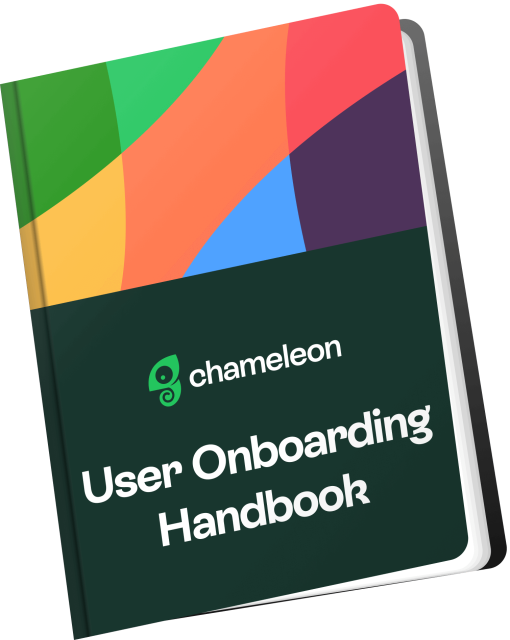
User Onboarding Handbook: Craft Exceptional Flows
It's your go-to guide to user onboarding – backed by behavioral science and packed with tips, tools, and tactics you can use to level up your onboarding game. We'll send the eBook straight to your inbox.
How to personalize the flows: 4 tactics you can apply right now #
When it comes to tailored user onboarding, there are a number of best practices to follow both for new and existing users. Taking these steps into consideration will help you develop an onboarding strategy that works for your users.
1. Segment users from the moment they sign up #
The first step to personalizing the user onboarding experience is to know who you're tailoring it to. You can't personalize it without knowing who your users are, after all.
You can create user segments based on a wide variety of attributes, but we recommend doing it by company size, department, role, and jobs to be done. That way, you can show each user the tools they’re most likely to need depending on the goals they want to achieve and the problems they want to solve with your product.
For example, a finance team will likely use your product differently than a marketing team. Each team would need a run-through of different features and functionalities that could help them increase their productivity and reach their “aha!” moment faster.
Personalized onboarding is how you give them the user-specific details they need to hit the ground running.
How can you segment users for personalization?
One way to do this is to ask users directly about their roles and expectations during the sign-up process or within your welcome product tour.
You can ask users about their job titles and day-to-day tasks they would use your product for. This can be a single question or multiple questions depending on how much information you need to adequately personalize the experience.
That being said, don’t overdo it—a long sign-up process isn’t a great first impression. Take a look at this example of how Levity gathered needed information during their initial sign-up process.
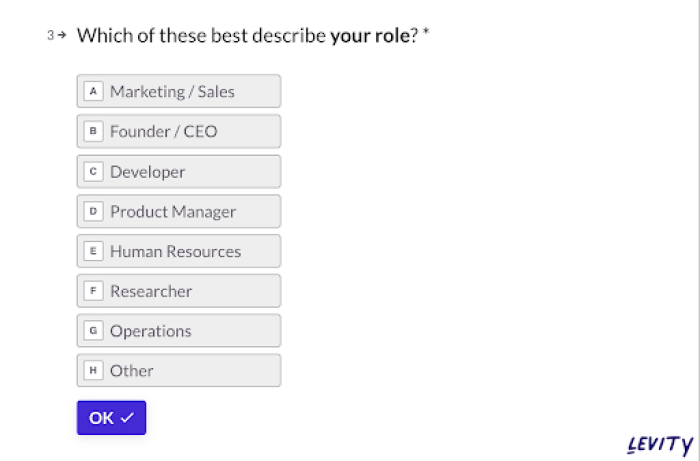
(Source)
You can also ask users about their roles using an in-app survey, a contextual questionnaire that you can show during the onboarding experience.
2. Offer different next steps for each segment #
The answers you gather during the signup and early onboarding stages are what determine the user’s next steps.
Depending on the answers your new users provide, you want to guide them through different features within your product.
Let’s use our above-mentioned example of the finance team in comparison to the marketing team. Let’s say that the product you’re offering them is a solution built to simplify the process of working with freelancers—from sourcing them to paying invoices.
In this case, the personalized onboarding experience for each team could include:
For the finance team: core features, invoice management, payment tool integration, chart creation, etc.
For the marketing team: core features, freelancer management, communications options, project management, etc.
In other words, finance managers don’t need to know how to source freelance graphic designers, nor do marketers need to know how to send payment.
Note, however, that your core features should be included in the onboarding process regardless of role. These are the features that users need no matter what—personalization starts when you start to dig deeper into each user’s needs.
How to guide users through specific features?
Personalized onboarding calls for in-app guidance in the form of tooltips for additional in-line information, product and feature tours, onboarding checklists, and more.
For example, you can create custom user segments and trigger different formats of in-app guidance depending on the users in question.
This helps you guide your users through their first steps in your product—directing them to the can’t-miss features for their role with timely, relevant, and contextual flows.
💡 You can create in-app guides with Chameleon's easy-to-use Builder to customize the audience segments and configure the onboarding flows to cater to specific needs for each segment. You can try it out for yourself in our Playground, a sandbox environment where you can explore and play with different tools, options, and formats. It's free.
3. Make sure to provide various onboarding options #
Not all onboarding experiences are created equal—different approaches work for different users. Offering a wide variety of options ensures you’re covering all bases.
Put simply, you’ve got two options: high-touch and low-touch approach. High-touch onboarding involves more guidance while low-touch includes more of a self-serve approach to support.
High-touch onboarding is a more traditional, white-glove approach to onboarding. It includes things like 1-1 calls, onboarding meetings, a dedicated success manager, and more. High-touch support can also refer to more comprehensive guides and onboarding videos, too.
Low-touch onboarding is pretty much everything else. It’s a hands-off approach, where users aren’t guided through the product by your team. Instead, they’re nudged towards features by in-product experiences that enable them to learn at their own pace. These can be product tours, onboarding checklists, contextual tips, gamified experiences, and more. It’s self-service onboarding.
Both high- and low-touch onboarding can, of course, be personalized to user wants and needs. Depending on the user in question, you can provide an onboarding experience that’s specific to your user’s needs.
How to provide various onboarding options?
Your onboarding experience should include a variety of onboarding experiences and flows that point users in the right direction—towards their “aha!” moment.
Remember, onboarding is not a one-and-done approach—you never stop onboarding users. New features, product updates, redesigns, and other changes all require personalized user onboarding.
You’ve got a wealth of options when it comes to how to onboard users, such as;
Tours: Show users around your product and its features with a product tour and in-app tutorials
Tooltips: Help guide blocked users through product features with contextual support in tooltips
Checklists: Let users pace out their onboarding journey with an in-app onboarding checklist or an always-available help menu with relevant resources for them
Knowledge hub: Make self-serve support easy with a comprehensive help center, and use the links within your help menus to direct users to the answers they are looking for
1-1 calls: Hold your user’s hand as they take their first steps through your product, via regular sync calls with a dedicated success manager
Take a look at how Moz uses Chameleon to onboard new users with contextual tips 👇

Moz Product Tour
4. Onboarding a team? Set them on a personalized journey with your product #
Remember when we said that users increasingly want self-serve support and onboarding options? Yeah…that’s not always the case—some teams might prefer a more hands-on approach.
Personalizing the onboarding experience for a team is a little trickier than for individual users, but it’s by no means impossible. You’ll first need to collect details on what they want from the onboarding experience, which requires you to gather details on their needs.
How to personalize the onboarding experience for a team?
The first step to personalizing the onboarding experience for teams is to understand organizational wants and needs. What features are going to create the biggest impact for this team? What are the must-knows for them when using your solution?
Once you’ve got an idea of how the new team is looking to use your product, you can create an onboarding experience that works for them. This will likely include kick-off calls, team walkthroughs, team demos personalized to their needs, shared docs with onboarding goals, and challenges to keep them engaged.
When team onboarding is complete, you can provide additional support through low-touch onboarding methods—such as in-app guidance and contextual tips.
Top 3 personalized onboarding examples you can learn from #
Now, what help would we be if we didn’t leave you with some best-in-class onboarding examples of personalized onboarding? Aside from a visual, we’ve included key learnings to take away from each when building your personalized onboarding flow.
Example #1: Notion #
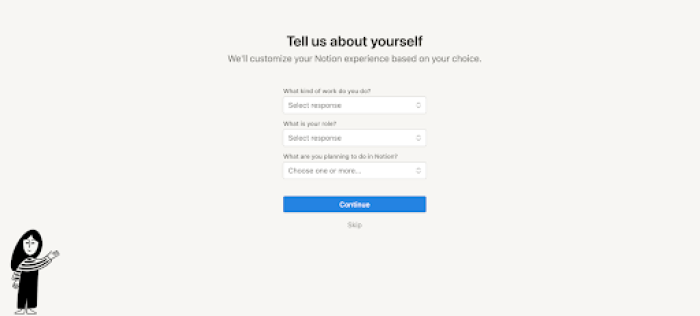
(Source)
Notion does a great job of personalizing the onboarding experience for each user by asking them about the work they do, their role, and how they plan to use Notion. This then enables them to provide user-specific suggestions during the onboarding process—as demonstrated in the in-app guidance below.
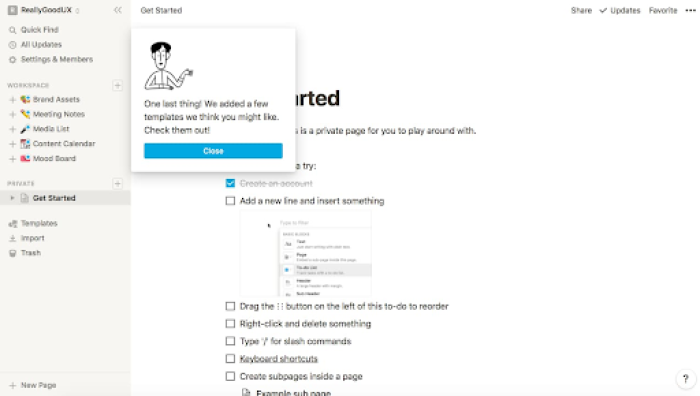
(Source)
This helps users find what could be most beneficial to them, faster—reducing the time to value and guiding users towards their “aha!” moment.
What can you learn from this onboarding flow?
Gather details from users from the get-go
Ask direct questions about the planned use of your platform
Segment users in a variety of ways, not just one
Example #2: Apple Music #
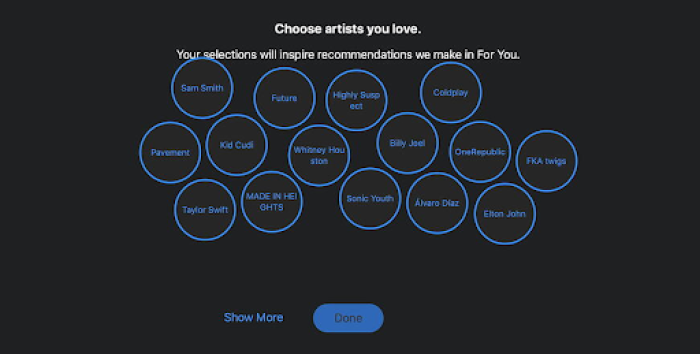
(Source)
Apple Music aims to give users exactly what they want from the get-go, and offer a sleek onboarding UX/UI. By asking new users about their current music taste, the platform is able to better tailor suggestions to each individual user.
What can you learn from this onboarding flow?
Give users options to choose from
Tell users what you’ll use the information for
Enable users to find more options if the first doesn’t apply to them
Example #3: Twitter #
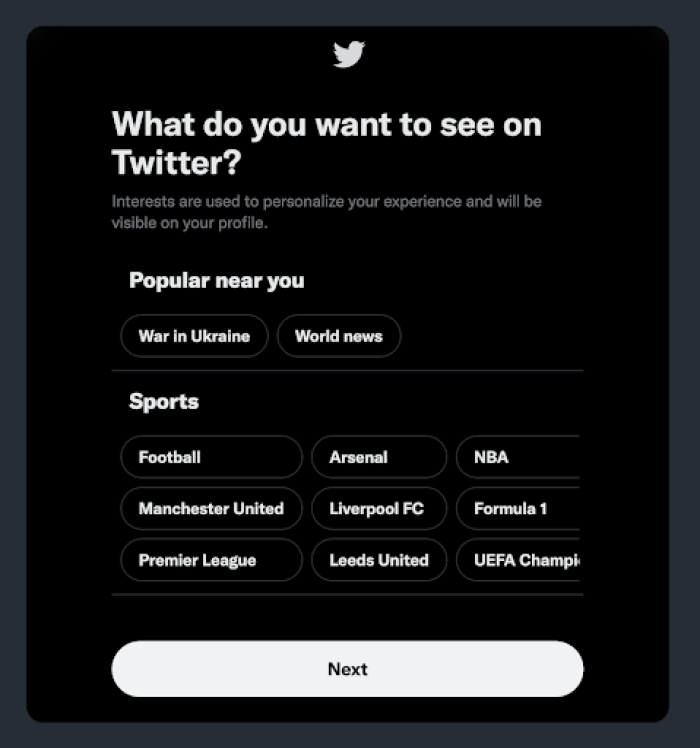
(Source)
Our final personalized onboarding example comes from Twitter. This question is included during the signup process and helps ensure users are shown content relevant to their interests as soon as they start using the platform.
It’s straight to the point, and it divides options into simple categories and subcategories.
What can you learn from this onboarding flow?
Start with a direct question in your onboarding flow
Offer ample options to choose from for specific interests
Show popular options for similar users, as demonstrated by the ‘popular near you’ category
🤓 Remember, personalization is so much more than Hello [First_Name]. It’s making your users feel at home with your product from the second they sign up.
Keep your users engaged from the get-go #
There are no two ways about it—personalization is the way forward. It’s safe to say that users now expect personalized onboarding from SaaS tools. It's a must rather than a want.
Personalized onboarding sets the stage for your user’s success with your product, and can be a great first impression of your brand and product. It’s well worth the time and energy put into creating personalized flows, and can be the difference between users recognizing your product’s value and not.
If you’re looking to personalize the onboarding experience for your users, you can start today with Chameleon (no code needed), or book a personalized call with our product experts to learn how exactly it can help you drive better product adoption.
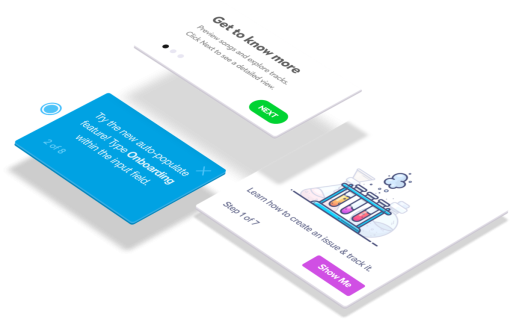
Build in-app guides to retain users
Chameleon makes it easy for product teams to create product tours, tooltips, onboarding checklists, and in-app surveys without code.

